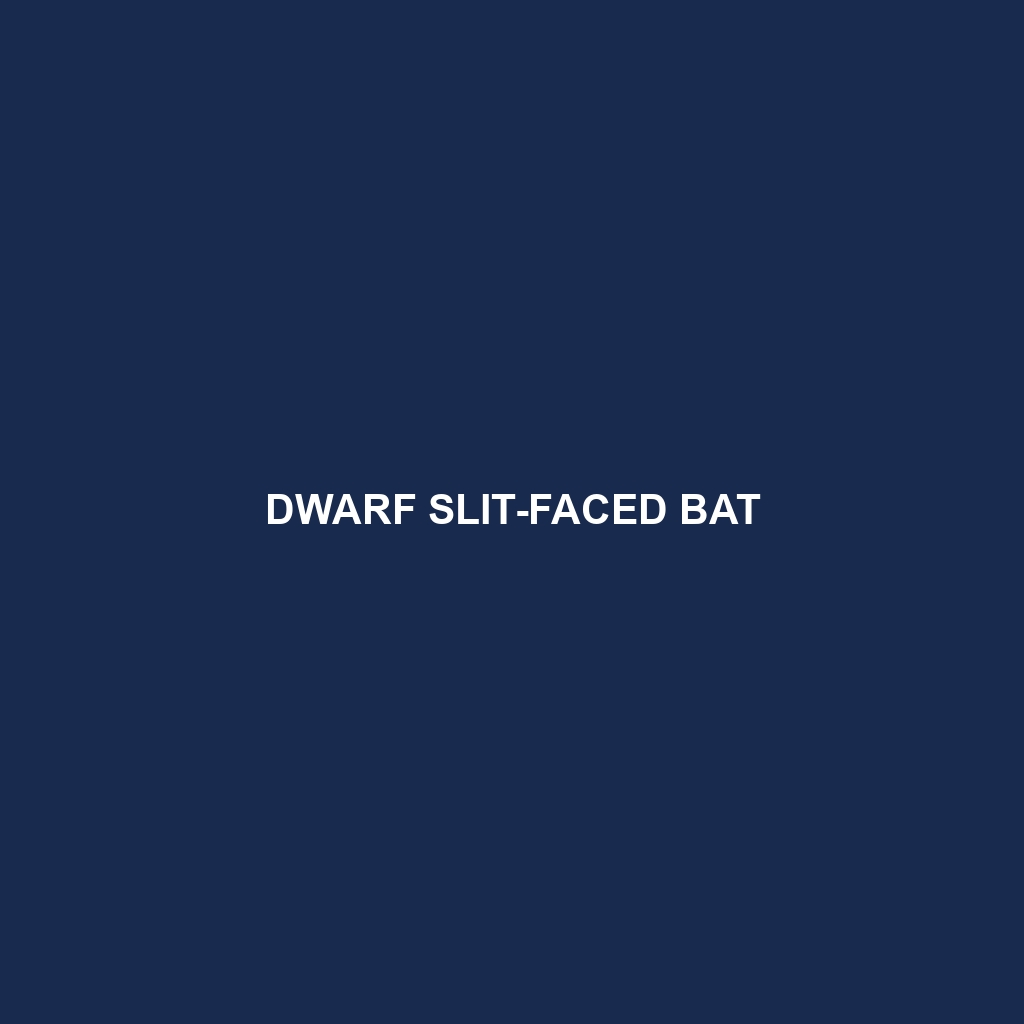Dja Slit-faced Bat Species Description
Common Name: Dja Slit-faced Bat
Scientific Name:
Habitat
The Dja Slit-faced Bat is primarily found in the dense, humid rainforests of Central Africa, particularly within areas such as the Dja Faunal Reserve in Cameroon. This species thrives in moist, tropical environments that provide ample roosting sites in tree hollows and underbrush, essential for their survival.
Physical Characteristics
Dja Slit-faced Bats are medium-sized bats, typically measuring around 8-10 cm in body length, with a wingspan of approximately 25 cm. Their fur is generally dark brown to black, with lighter underparts. One of their most distinctive features is a prominent slit-like nose which aids in their echolocation abilities. Their large ears are another notable characteristic, enhancing their auditory perception.
Behavior
This species exhibits nocturnal behavior, emerging from their roosts at dusk. Dja Slit-faced Bats are known for their agility in flight, allowing them to navigate through densely packed foliage. They often congregate in small groups, which aids in social cohesion and protection from predators. Their unique foraging behavior includes using echolocation to hunt for insects in mid-air.
Diet
The diet of the Dja Slit-faced Bat primarily consists of insects such as moths, beetles, and other flying invertebrates, making them vital for controlling insect populations in their habitat. Their foraging habits are adapted to take advantage of the rich biodiversity of the African rainforests, allowing them to sustain themselves year-round.
Reproduction
Dja Slit-faced Bats typically breed during the rainy season, which can vary depending on local climatic conditions. Females usually give birth to a single pup after a gestation period of about 3 months. The young are nursed for several weeks before they begin to accompany their mothers on foraging trips, teaching them essential survival skills.
Conservation Status
The Dja Slit-faced Bat is currently listed as vulnerable on the IUCN Red List due to habitat loss and degradation caused by logging and agricultural expansion. Conservation efforts are crucial to maintain their population and habitat in pristine conditions.
Interesting Facts
One fascinating aspect of the Dja Slit-faced Bat is its ability to navigate silently through the dense forest canopy, thanks to its specialized echolocation skills. Additionally, this bat plays a vital role in seed dispersal, contributing to the regeneration of the forest ecosystem.
Role in Ecosystem
The Dja Slit-faced Bat is an integral part of its ecosystem, acting as both a predator and prey. By feeding on insects, they help control pest populations, which can affect crop yields in surrounding areas. Furthermore, their seed dispersal actions contribute to the propagation of various plant species, supporting forest biodiversity.
